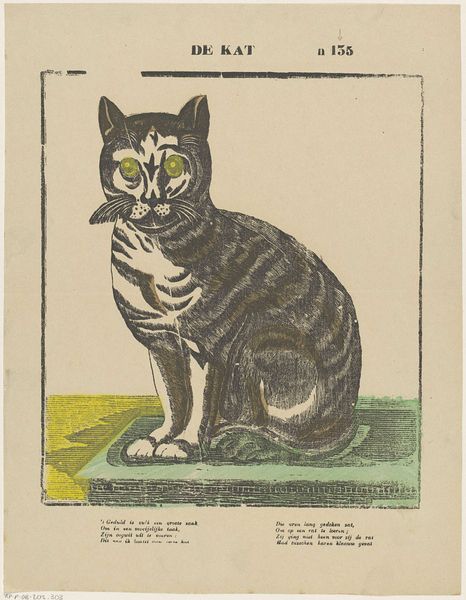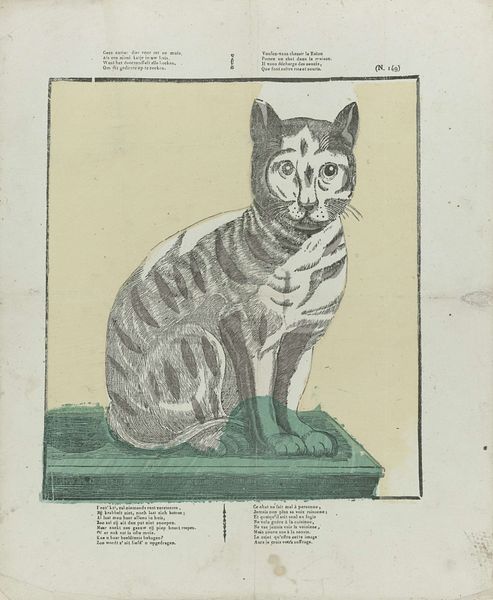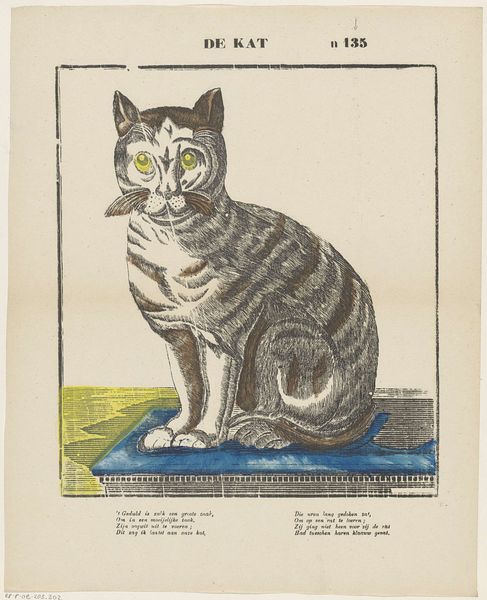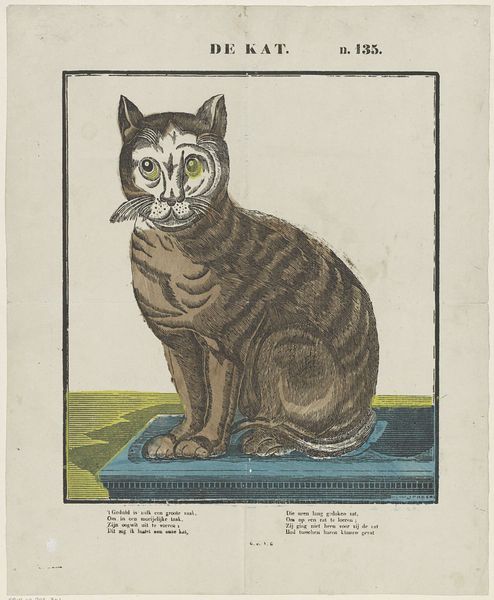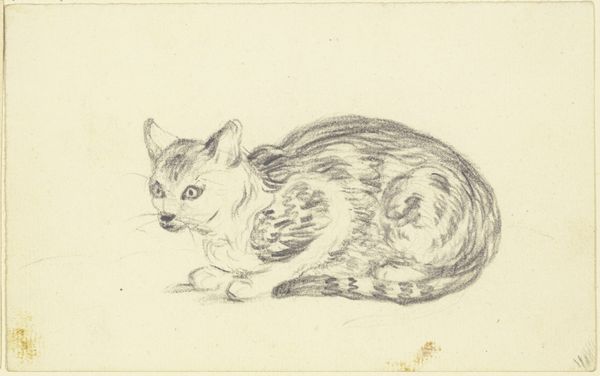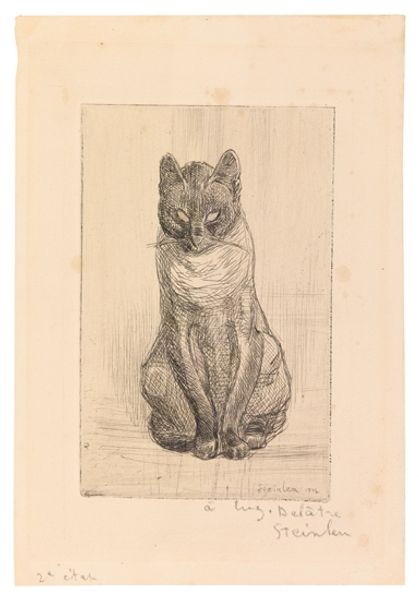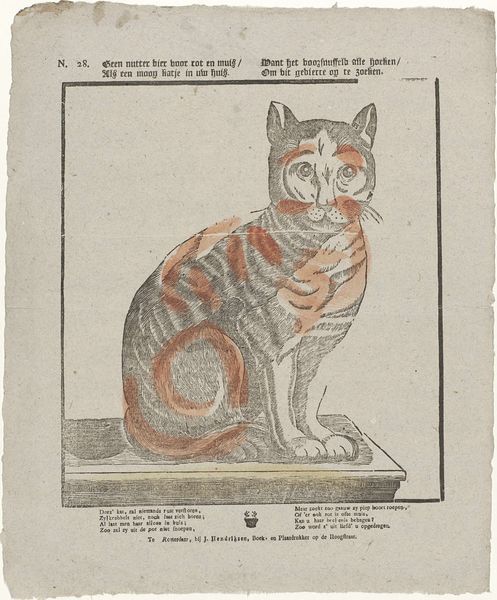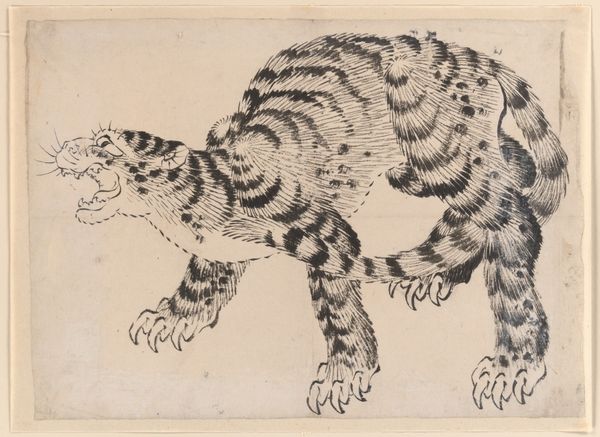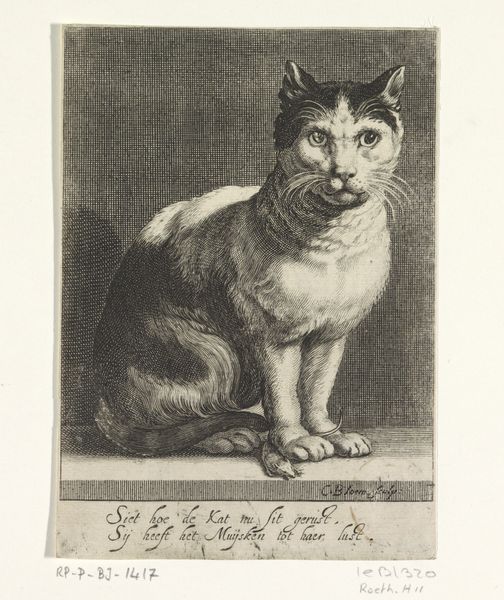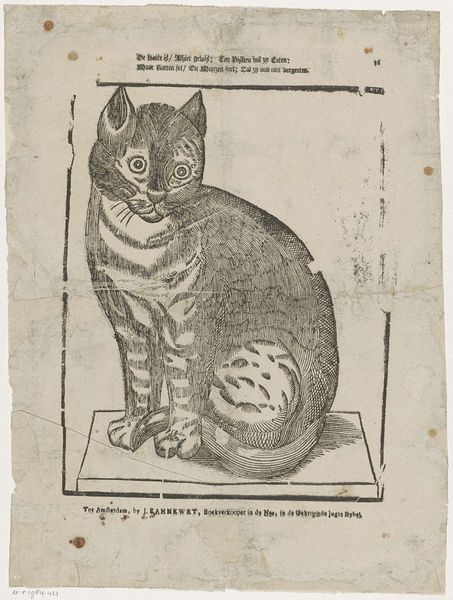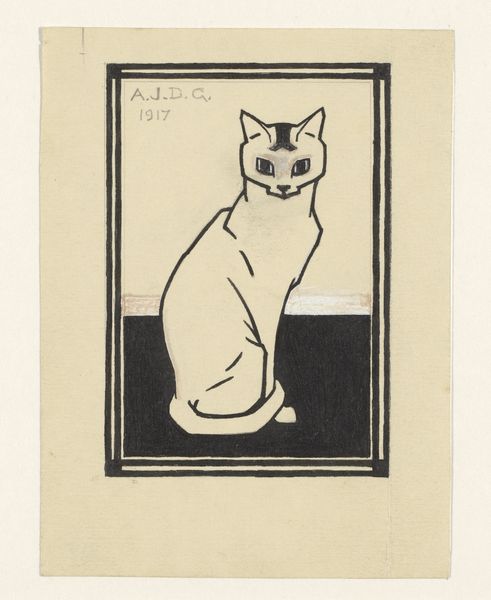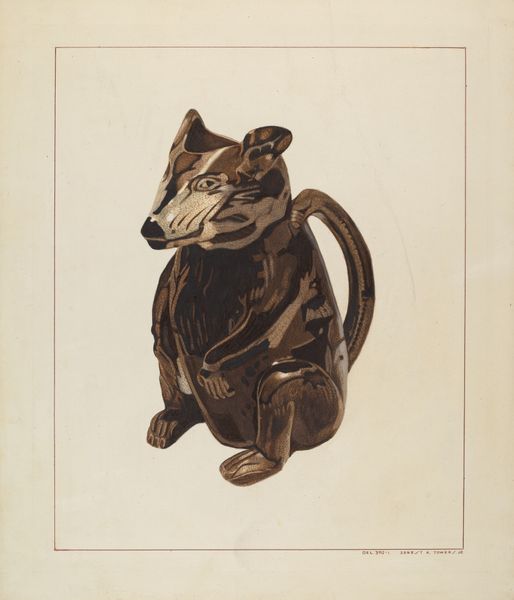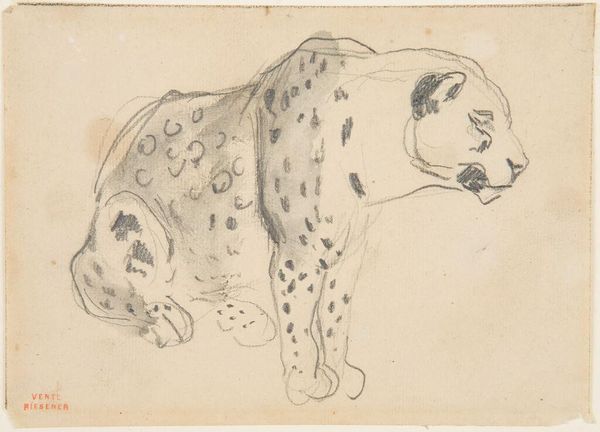![Geen nutter dier voor rot en muis, / Als een mooi katje in uw huis [(...)] by Philippus Jacobus Brepols](/_next/image?url=https%3A%2F%2Fd2w8kbdekdi1gv.cloudfront.net%2FeyJidWNrZXQiOiAiYXJ0ZXJhLWltYWdlcy1idWNrZXQiLCAia2V5IjogImFydHdvcmtzL2EzZjljODYwLTEzZjItNDI2Yi05NWNkLTk2Y2E4MmZmMmMzOS9hM2Y5Yzg2MC0xM2YyLTQyNmItOTVjZC05NmNhODJmZjJjMzlfZnVsbC5qcGciLCAiZWRpdHMiOiB7InJlc2l6ZSI6IHsid2lkdGgiOiAxOTIwLCAiaGVpZ2h0IjogMTkyMCwgImZpdCI6ICJpbnNpZGUifX19&w=3840&q=75)
Geen nutter dier voor rot en muis, / Als een mooi katje in uw huis [(...)] 1800 - 1833
0:00
0:00
philippusjacobusbrepols
Rijksmuseum
drawing, print, pen
#
portrait
#
drawing
# print
#
pen
#
watercolour illustration
Dimensions: height 374 mm, width 296 mm
Copyright: Rijks Museum: Open Domain
Curator: Here we have a print entitled "Geen nutter dier voor rot en muis, / Als een mooi katje in uw huis" – "No animal is better for rats and mice, / Than a beautiful cat in your house". It's a pen drawing, possibly with watercolor illustration elements, dating from between 1800 and 1833. Editor: It has a sort of earnestness, hasn't it? The rather intense gaze of the cat, that handmade quality in the lines and the application of pigment...it gives off the feel of, maybe, a child's book illustration. Curator: Precisely. It's the kind of print one might have found affixed to the wall, offering a blend of moralizing and, in this case, also a practical viewpoint: cats are useful members of the household! Consider how this cat-as-commodity image reflects broader social views toward animals. Editor: I am intrigued by the level of craft here. Look at how someone rendered fur and anatomy with simple, repeating strokes of pen and then augmented these lines with washes of watercolor. How many prints could they create, and how long did one take? We must think about the materiality here as something repetitive, manual... labor. Curator: And consider the audience for prints like this. These weren't typically for the elite, right? So what was the market for relatively mass-produced images depicting cats as...utilitarian, practically working-class heroes? It's quite interesting how the societal positioning of domestic life intersects here. Editor: I would agree that there seems a democratic impulse here. This is folk art—a print meant for many households rather than a unique painting for a rich patron. This print acts, if nothing else, like a visual statement. This feline represents how we engage with production and value. Curator: Yes, reflecting on it all together, I'm struck by how much social commentary could be drawn from a seemingly simple cat portrait, linking utility, artistry, and class dynamics of its time. Editor: Absolutely. Paying attention to those humble strokes and limited materials, that's how we discover the tangible, class-conscious essence of making art available to people who may otherwise never have the opportunity.
Comments
No comments
Be the first to comment and join the conversation on the ultimate creative platform.
